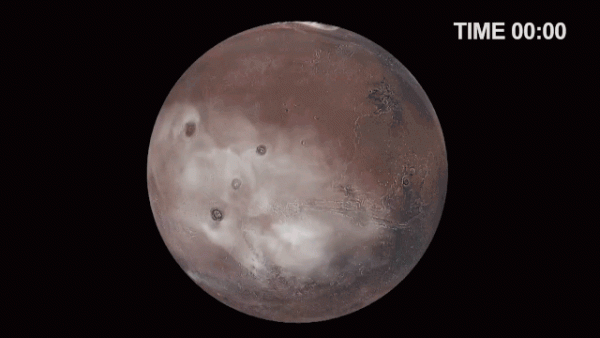
Weather models are a daily staple of life on Earth, but they can go interplanetary as well, sometimes with a boost from Earth’s most sophisticated computers.
That sort of work is on display in a newly released NASA data visualization showing how clouds grow and shrink over the course of a day on Mars. The visualization is the work of the Mars Climate Modeling Center at NASA’s Ames Research Center in California, relying on the institution’s supercomputing facility.
In the visualization, features visible on the surface of Mars include the four massive Tharsis volcanic mountains that stand out like knots in a wood plank. The vast Valles Marineris stretches out along the right-hand-side of the view, etched into the Red Planet’s surface.


